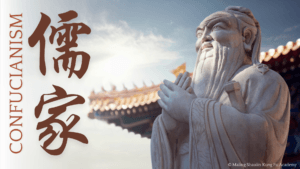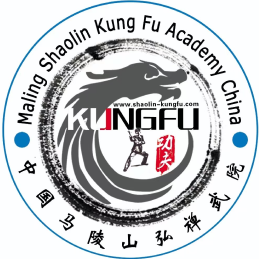Martial Arts as Cultural Exchange
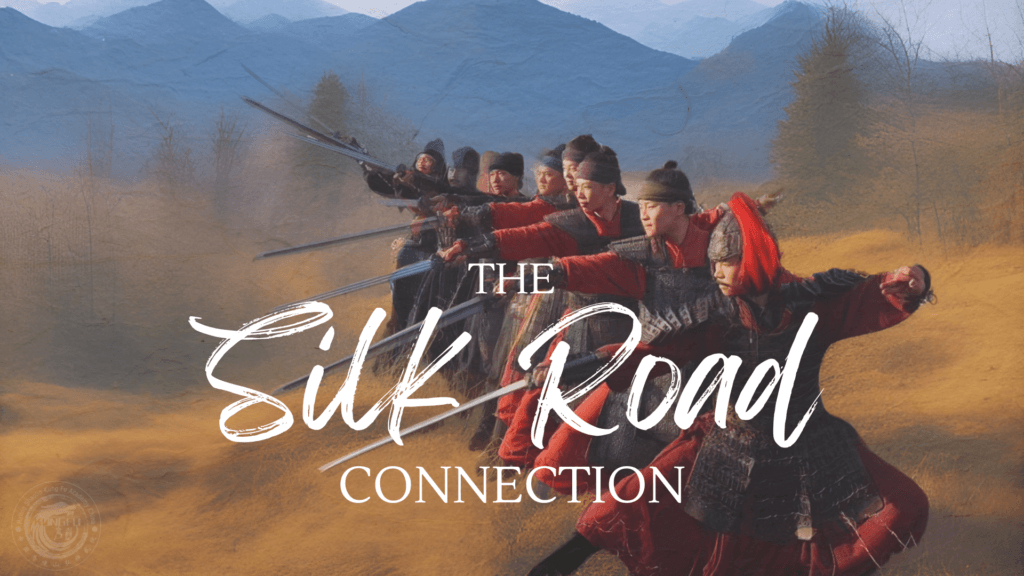
The Silk Road, a historic network of trade routes that connected the East and West, served as more than just a conduit for goods. It was a bridge for cultural exchange, facilitating the spread of ideas, philosophies, and martial arts practices between diverse civilizations. In this article, we delve into the profound impact of the Silk Road on martial arts as a form of cultural exchange, exploring how ancient trade routes shaped the development and evolution of combat systems across regions.
Historical Background
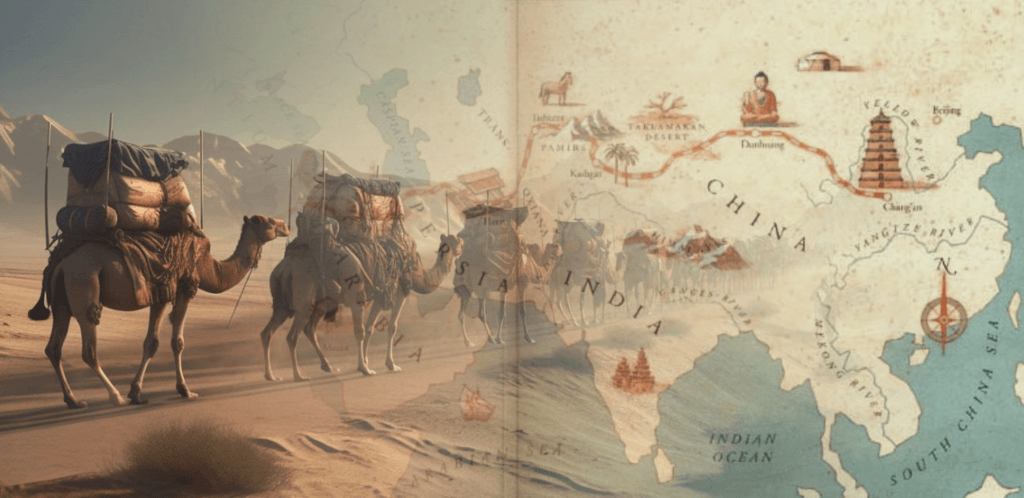
The Silk Road stands as one of history’s most enduring symbols of cultural exchange, linking the East and West through a vast network of trade routes. Beyond the exchange of silk, spices, and other commodities, the Silk Road facilitated the transmission of ideas, technologies, and martial arts practices across diverse civilizations. From the Han Dynasty to the Roman Empire, travelers and merchants traversed these ancient trade routes, bringing with them not only goods but also martial arts techniques, training methods, and philosophies. This cultural interchange along the Silk Road played a crucial role in shaping the development and evolution of martial arts in regions as far-flung as China, India, Persia, and Central Asia.
Integration of Techniques
Along the Silk Road, martial artists from different regions and cultures came into contact, leading to the exchange and integration of techniques, forms, and combat strategies. Chinese Kung Fu, with its emphasis on fluid movements and internal energy cultivation, blended with the grappling techniques of Persian Pahlavani and the striking techniques of Indian Kalaripayattu. Similarly, Central Asian wrestling styles like Kurash influenced the development of grappling techniques in neighboring regions. This ‘cross-pollination’ of martial arts traditions gave rise to new hybrid styles that incorporated the strengths of multiple disciplines, enriching the collective martial arts heritage of the Silk Road.
Silk Road Cities
Cities along the Silk Road, such as Samarkand, Kashgar, and Dunhuang, were hubs of martial arts exchange. Martial artists, scholars, and travelers congregated in these cities, sharing their knowledge and contributing to the cross-cultural exchange of martial arts practices.
Samarkand, Uzbekistan

Samarkand is one of the oldest inhabited cities in Central Asia and was a major hub along the Silk Road. It was known for its strategic location at the crossroads of trade routes linking China, India, Persia, and the Mediterranean. Samarkand was famed for its architectural wonders, including the Registan Square, Shah-i-Zinda necropolis, and the Bibi-Khanym Mosque, which showcased the city’s rich cultural heritage.
As a center of commerce and culture, Samarkand attracted travelers, traders, and scholars from across the world. The city’s bazaars bustled with activity, offering goods from distant lands and serving as meeting points for merchants and traders. Samarkand’s cosmopolitan atmosphere fostered cross-cultural exchange, including the sharing of martial arts knowledge among travelers and practitioners along the Silk Road.
Kashgar, China (Xinjiang Uygur Autonomous Region)

Kashgar is an ancient city located in the westernmost part of China, near the border with Central Asia. It was a vital trading post along the Southern Silk Road, connecting China with Central Asia, India, and the Middle East. Kashgar served as a melting pot of cultures, where travelers from different regions converged to exchange goods, ideas, and martial arts practices.
The city’s historic Old Town, with its labyrinthine streets and traditional mud-brick houses, reflects its rich history as a center of trade and cultural exchange. Kashgar’s bustling markets, known for their vibrant atmosphere and diverse array of goods, attracted merchants, travelers, and martial artists alike, contributing to the cross-cultural exchange of martial arts knowledge along the Silk Road.
Dunhuang, China (Gansu Province)

Dunhuang is a historic oasis town located at the edge of the Gobi Desert in northwest China. It was a crucial stop along the Northern Silk Road, serving as a gateway between China and Central Asia. Dunhuang was renowned for the Mogao Caves, a UNESCO World Heritage site that houses one of the world’s most extensive collections of Buddhist art and manuscripts.
As a cultural crossroads, Dunhuang played a significant role in the transmission of ideas, religions, and martial arts along the Silk Road. The city’s strategic location made it a vital hub for trade and cultural exchange, attracting travelers, pilgrims, and martial artists from diverse backgrounds. Dunhuang’s vibrant cultural scene, which included Buddhist monasteries, trading posts, and artistic workshops, fostered the exchange of martial arts knowledge and techniques among practitioners traveling along the Silk Road.
Integration of Martial Arts and Meditation
Within Buddhist monastic traditions, martial arts were often integrated with meditation practices as a means of cultivating discipline, focus, and self-awareness. Monks would engage in physical training, including martial arts exercises, as part of their spiritual practice, emphasizing the harmonious development of body, mind, and spirit.
Artistic Depictions
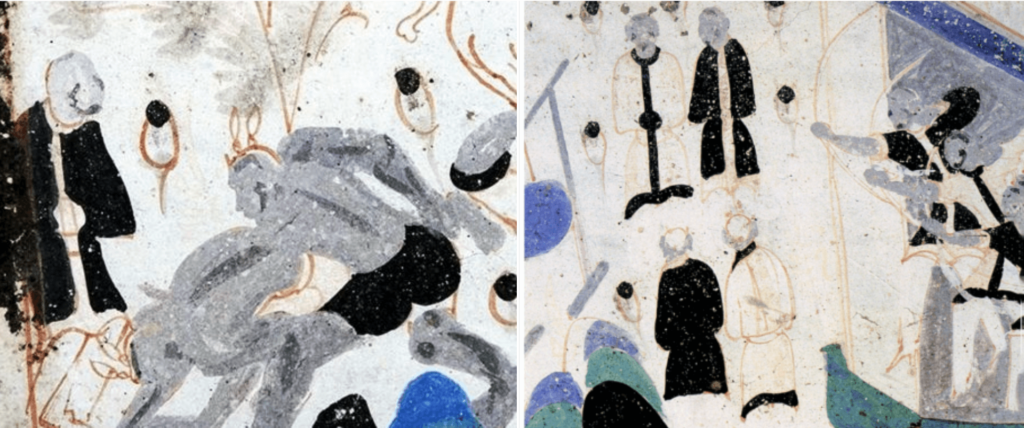
Artistic depictions found in Dunhuang’s Mogao Caves and other Buddhist sites offer insights into the intersection of martial arts and Buddhist culture. The murals, sculptures, and cave paintings often depict scenes of daily life, including activities such as hunting, dancing, and physical exercises, including sports such as archery, wrestling, martial arts, and swimming.
Cross-Cultural Understanding
Martial arts continue to play a vital role in promoting cross-cultural understanding and fostering connections between people of different backgrounds. Through training, competition, and shared experiences, martial artists from diverse cultures come together to celebrate their common passion for martial arts and learn from each other’s traditions. By embracing the values of respect, discipline, and camaraderie inherent in martial arts practice, individuals forge meaningful connections that transcend geographical, linguistic, and cultural barriers. As ambassadors of their respective martial arts traditions, practitioners contribute to a global community united by a shared appreciation for the rich cultural heritage of the Silk Road.
Conclusion
The Silk Road remains a testament to the power of cultural exchange and the enduring legacy of human ingenuity and collaboration. Through the exchange of goods, ideas, and martial arts practices, the Silk Road forged connections between distant lands and shaped the development of martial arts traditions across diverse civilizations. Today, as we reflect on the profound influence of the Silk Road on martial arts as a form of cultural exchange, we celebrate the rich tapestry of martial arts heritage that continues to unite people of all backgrounds in a shared appreciation for the timeless art of combat. As stewards of this cultural legacy, we embrace the values of respect, diversity, and unity that define the martial arts community, ensuring that the spirit of the Silk Road lives on in the hearts and minds of martial artists around the world.



